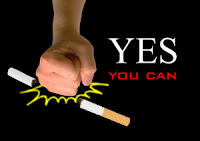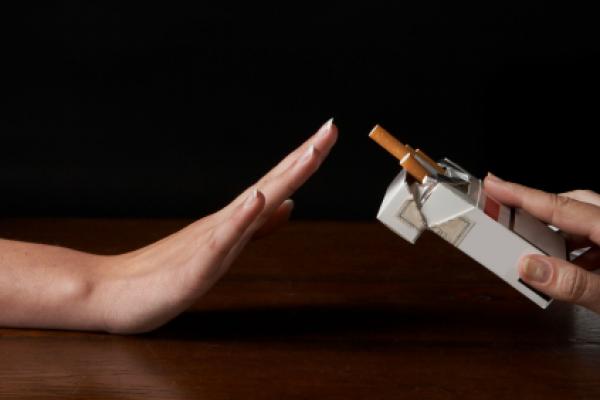A heart attack occurs when one of the heart's coronary arteries is blocked suddenly, usually by a tiny blood clot (thrombus). The blood clot typically forms inside a coronary artery that already has been narrowed by atherosclerosis, a condition in which fatty deposits (plaques) build up along the inside walls of blood vessels. A heart attack also is called a myocardial infarction or coronary thrombosis.
 |
Each coronary artery supplies blood to a specific part of the heart's muscular wall, so a blocked artery causes pain and malfunction in the area it supplies. Depending on the location and amount of heart muscle involved, this malfunction can seriously interfere with the heart's ability to pump blood. Also, some of the coronary arteries supply areas of the heart that regulate heartbeat, so a blockage sometimes causes potentially fatal abnormal heartbeats, called cardiac arrhythmias. The pattern of symptoms that develops with each heart attack and the chances of survival are linked to the location and extent of the coronary artery blockage.
 |
| Cardiac arrhythmias |
Most heart attacks result from atherosclerosis, the risk factors for heart attack and atherosclerosis are basically the same:
- An abnormally high level of blood cholesterol (hypercholesterolemia)
- An abnormally low level of HDL (high-density lipoprotein), commonly called "good cholesterol"
- High blood pressure (hypertension)
- Diabetes
- Family history of coronary artery disease at an early age
- Cigarette smoking
- Obesity
- Physical inactivity (too little regular exercise)
 |
| Obesity is one of the factor |
In early middle age, men have a greater risk of heart attack than women. However, a woman's risk increases once she begins menopause. This could be the result of a menopause-related decrease in levels of estrogen, a female sex hormone that may offer some protection against atherosclerosis.
 |
| Too much fast food |
Although most heart attacks are caused by atherosclerosis, there are rarer cases in which heart attacks result from other medical conditions. These include congenital abnormalities of the coronary arteries, hypercoagulability (an abnormally increased tendency to form blood clots), a collagen vascular disease, such as rheumatoid arthritis or systemic lupus erythematosus (SLE, or lupus), cocaine abuse, a spasm of the coronary artery, or an embolus (small traveling blood clot), which floats into a coronary artery and lodges there.
 |
Symptoms of Heart Attack
The most common symptom of a heart attack is chest pain, usually described as crushing, squeezing, pressing, heavy, or occasionally, stabbing or burning. Chest pain tends to be focused either in the center of the chest or just below the center of the rib cage, and it can spread to the arms, abdomen, neck, lower jaw or neck. Other symptoms can include sudden weakness, sweating, nausea, vomiting, breathlessness, or lightheadedness. Sometimes, when a heart attack causes burning chest pain, nausea and vomiting, a patient may mistake his or her heart symptoms for indigestion.
 |
Diagnosis
Your doctor will ask you to describe your chest pain and any other symptoms. Ideally, a family member or close friend should accompany you when you go for medical treatment. This person can help to provide your doctor with valuable information about your symptoms and medical history if you are unable to do so. It is also important to give your doctor a list of the names and dosages of the prescription and nonprescription medications that you are taking. If you don't have a list already prepared, just scoop the medicines into a nearby bag or purse and bring them with you to the hospital.
Your doctor will suspect that you are having a heart attack based on your symptoms, your medical history and your risk factors for cardiovascular disease. To confirm the diagnosis, he or she will do:
Additional tests may be needed, including:
Expected Duration of Heart Attack
How long heart attack symptoms last varies from person to person. In about 15% of cases, the patient never reaches a hospital for treatment and dies quickly after symptoms begin.
 |
| Some may have no early symptoms |
Prevention is Better Than Cure
You can help to prevent a heart attack by:
- Exercising regularly
- Eating healthfully
- Maintaining a healthy weight
- Not using tobacco products
- Controlling your blood pressure
- Lowering your LDL cholesterol.
 |
| Maintain a healthy diet |
When To Call A Professional
Seek emergency help immediately if you have chest pain, even if you think it is just indigestion or that you are too young to be having a heart attack. Prompt treatment increases your chance of limiting heart muscle damage, because reperfusion measures work best if they are started within 30 minutes after symptoms start.
 |
| Seek doctors advise for your symptoms |
For more health info and promotions, please follow us on Facebook- Wellness Lab
 |
| Download Wellness Lab Mobile App now for more promotions |
If you like this article, you can share this to your friends and families , together we share the health information and the taste of a healthy life!




































